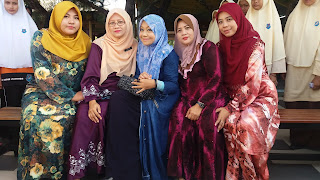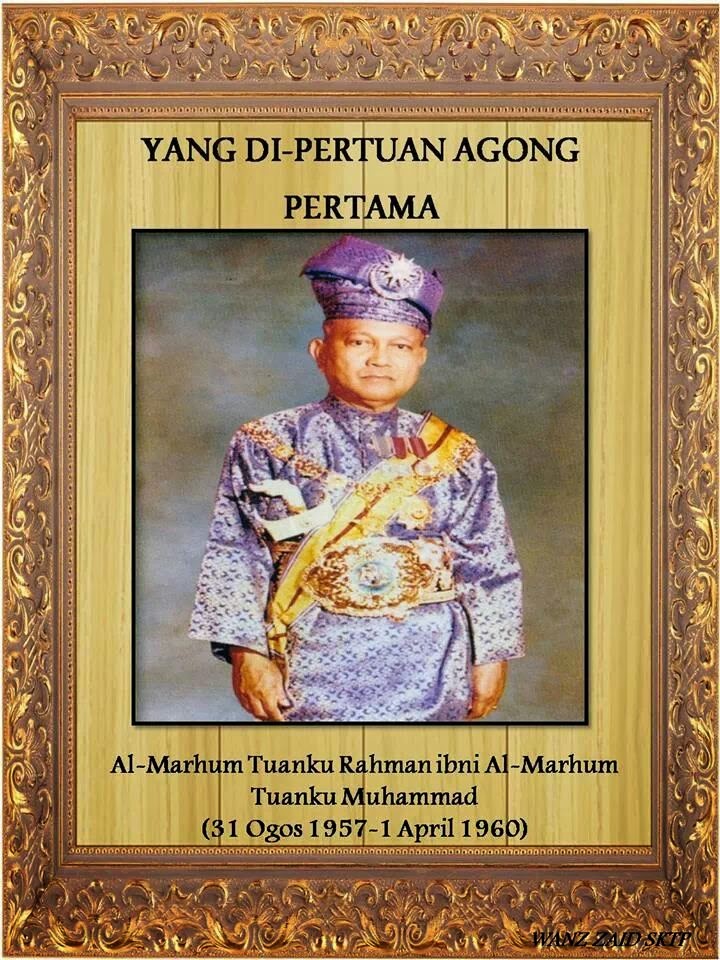TARIKH : 21 SEPTEMBER 2016
HARI : ISNIN
MASA : 10.00 PAGI - 1.00 PTG
TEMPAT : BALAI ISLAM, LUNDANG, KOTA BHARU, KELANTAN
PUSAT SUMBER SEKOLAH SMK BERIS PANCHOR
PSS SMK BERIS PANCHOR
KE ARAH PSS DIGITAL MENJELANG 2015
Tuesday, October 11, 2016
PROGRAM JELAJAH SEKOLAH NOVELIS AIN MAISARAH KE PSS SMKBP
Tarikh : 19 Julai 2016 (Selasa)
Masa : 8.00 pagi
Tempat : Dataran SMKBP
Pameran Buku
Masa : 8.00 pagi
Tempat : Dataran SMKBP
Matlamat
Sebagai penulis yang memartabatkan Bahasa Melayu sebagai
Bahasa Kebangsaan di Malaysia, kami komited dalam memperkenalkan dan memberi
pendedahan kepada pelajar berkenaan bahan bacaan yang sesuai dan boleh dibaca
oleh pelajar sekolah rendah dan juga sekolah menengah.
Dalam mengetengahkan peri pentingnya pembacaan buku-buku
Bahasa Melayu Tinggi ini, kami sebolehnya mahu memberi pendedahan kepada para
pelajar akan perlunya para pelajar memilih bahan bacaan yang bermutu samaada
berbentuk ilmiah atau tidak selari dengan kehendak Program Nilam yang telah
dibangunkan oleh Kementerian Pelajaran.
Justifikasi
Program
·
Bagaimana mahu memilih bahan bacaan santai
tetapi berkualiti dan bermanfaat
·
Bagaimana mahu membina kerjaya daripada hobi
membaca
·
Bagaimana proses penulisan berlaku
·
Memecah tembok idea yang selalu dialami oleh
pelajar ketika menulis esei
·
Membentuk nilai-nilai murni pelajar melalui
pembacaan
·
Menegaskan penggunaan kosa kata yang betul
selari dengan kehendak kualiti Bahasa Melayu Tinggi.
Objektif
- Memberi pendedahan kepada para pelajar mengenai
kerjaya penulisan dan bagaimana cara untuk menerbitkan sesebuah
buku/komik.
- Menarik minat pelajar untuk membaca melalui kempen membaca dan membantu
pihak sekolah dalam mencapai
matlamat Program Nilam.
- Meningkatkan penguasaan tatabahasa dikalangan
pelajar melalui pembacaan buku terbitan PTS
- Mencungkil bakat baru dikalangan pelajar dalam
bidang penulisan dan lukisan.
- Memberi motivasi kepada pelajar.
Tarikh/ Masa/ Tempat
Majlis Pelancaran Program BLINK
Tarikh : 19 Julai 2016 (Selasa)
Masa :
Bermula jam 9.00 pagi hingga 11.00 petang
Tempat : Dewan
Sri Bentara, SMKBP
Sasaran :
Pelajar Tingkatan 4
Pameran Buku
Tarikh : 19 Julai 2016 hingga 21 Julai
2016 (Selasa hingga Khamis)
Masa :
Bermula jam 9.00 pagi hingga 11.00 petang
Tempat :
Dewan Sri Bentara, SMKBP
Sasaran :
Semua guru SMK Beris Panchor
Semua pelajar SMK
Beris Panchor.
Semua staf SMK Beris Panchor
Pengisian Program
Tentatif Program (19 Julai 2016)
9.00 - Ucapan 30
minit oleh Penulis/Pelukis Komik di hadapan semua pelajar
(Kempen
membaca dan kerjaya)
10.30 - Sesi ramah
mesra, tandangan dan bergambar bersama Penulis/Pelukis Komik
(selepas ucapan)
11.30 - Selesai
Thursday, October 9, 2014
14 TECHNOLOGY CONCEPTS EVERY TEACHER SHOULD KNOW ABOUT
So you are coming across too many tech terms that it becomes
hard for you to draw clear boundaries between what each of them refer to. Well
we do share with you this confusion and that is why we deem it important to put
forward a list of the major and most popular educational concepts that are
technology-related. The list below is a simple attempt to help you better
capture the full picture of what all these tech terms are about by providing
clear definitions to each one of them. If you like visuals and want to have a
poster instead then check out this one HERE.
1 - Adaptive Learning
This is an educational method which uses computers as
interactive teaching devices. Computers adapt the presentation of educational
material according to students' learning needs, as indicated by their responses
to questions and tasks. The motivation is to allow electronic education to
incorporate the value of the interactivity afforded to a student by an actual
human teacher or tutor. The technology encompasses aspects derived from various
fields of study including computer science, education, and psychology
2 - Virtual Classroom
A virtual classroom is an online learning environment. The
environment can be web-based and accessed through a portal or software-based
and require a downloadable executablefile. Just like in a real-world classroom,
a student in a virtualclassroom participates in synchronous instruction, which
means that the teacher and students are logged into the virtual learning
environment at the same time.
3 - MOOCS
Mooc is an acronym for “massive open online course”. It
refers to a web-based class designed to support a large number of
participants.Typically, students enrolled in a mooc watch video lectures –
often sliced into digestible 10 or 15-minute segments – and interact with
instructors and fellow participants in online forums. Some moocs require
students to take online tests or quizzes with multiple choice answers that can
be graded automatically, while others require students to complete
peer-reviewed assignments. Some moocs use a combination of these assessments.
4 - Synchronous Vs Asynchronous Learning
Synchronous online classes are those that require students
and instructors to be online at the same time. Lectures, discussions, and
presentations occur at a specific hour. All students must be online at that
specific hour in order to participate. Asynchronous classes are just the
opposite. Instructors provide materials, lectures, tests, and assignments that
can be accessed at any time. Students may be given a timeframe – usually a one
week window – during which they need to connect at least once or twice. But
overall, students are free to contribute whenever they choose.
5 - Blended Learning
" A blended learning approach combines face to face
classroom methods with computer-mediated activities to form an integrated
instructional approach. In the past, digital materials have served in a
supplementary role, helping to support face to face instruction.For example, a
blended approach to a traditional, face to face course might mean that the
class meets once per week instead of the usual three-session format. Learning
activities that otherwise would have taken place during classroom time can be
moved online...."
6 - Flipped Classroom
Flipped Classroom is an inverted method of instruction where
teaching and learning take place online outside of the class while homework is
done in the classroom.
7 - Self-directed Learning
’self-directed learning’ describes a process by which
individuals take the initiative, with our without the assistance of others, in
diagnosing their learning needs, formulating learning goals, identify human and
material resources for learning, choosing and implement appropriate learning
strategies, and evaluating learning outcomes.”
8 - Learning Management Systems
A learning management system (LMS) is a software application
or Web-based technology used to plan, implement, and assess a specific learning
process. Typically, a learning management system provides an instructor with a
way to create and deliver content, monitor student participation, and assess
student performance. A learning management system may also provide students
with the ability to use interactive features such as threaded discussions,
video conferencing, and discussion forums.
9 - Cloud Based Learning
Essentially, the Cloud is a notion of a group of computers
acting as one – and all connected to a network (and usually, the World Wide
Web). Further, the Cloud is a model of computing that allows for scaling of
resources based upon real-time needs. So, if there are many users utilizing the
system, a larger number of resources will be called upon to help distribute the
load.
Cloud based learning takes the notion of a perpetual,
universally accessible, scalable network of computers and applies it to
electronic learning – everything from online classrooms at accredited
universities, to smaller training modules to be used within companies or other
private enterprises.
10 - Mobile Learning
Mobile learning is the ability to obtain or provide educational
content on personal pocket devices such as PDAs, smartphones and mobile phones.
Educational content refers to digital learning assets which includes any form
of content or media made available on a personal device.
11 - Course Management System ( CMS )
A course management system is a set of tools that enables
the instructor to create online course content and post it on the Web without
having to handle HTML or other programming languages.
12 - E-learning
E-Learning means "electronic learning" — it refers
to a wide range of applications and processes designed to deliver instruction
through electronic means. Usually this means over the Web, however it also can
include CD-ROM or video-conferencing through satellite transmission. The
definition of E-learning is broader than, but includes, "online
learning," "Web-based training," and "computer-based
training."
13 - 1:1 Technology
Providing every student with a laptop or tablet to make
learning more individualized, increase independence, and extend academics beyond
the classroom
Gamification typically involves applying game design
thinking to non-game applications to make them more fun and engaging.
Gamification has been called one of the most important trends in technology by
several industry experts. Gamification can potentially be applied to any
industry and almost anything to create fun and engaging experiences, converting
users into players.
Subscribe to:
Posts (Atom)










































